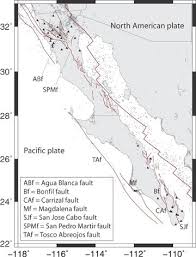Discovering Baja California: Culture, Attractions, and Economy

Introduction
Baja California, a vibrant region located on the northwest coast of Mexico, has drawn attention due to its stunning landscapes, rich cultural heritage, and rapid economic development. The importance of this area extends beyond tourism; it plays a significant role in trade and industry, making it a focal point for both local and international interests.
Culture and Attractions
The culture of Baja California is a unique blend of Mexican traditions and indigenous influences, with influences from various historical periods. Cities like Tijuana and Ensenada are known for their lively arts scenes, culinary delights, and welcoming locals. In recent events, Tijuana has witnessed a surge in culinary tourism, with renowned chefs promoting Baja’s farm-to-table initiatives through innovative restaurants that highlight local produce and seafood.
In addition to its urban offerings, Baja California is famous for its natural attractions. The Baja California Peninsula is home to diverse ecosystems, including stunning beaches, deserts, and mountains. Notable destinations include the Valle de Guadalupe, Mexico’s premier wine country, which has recently gained international acclaim for its high-quality wines and picturesque vineyards. The area also hosts the annual Vendimia (Wine Harvest Festival), attracting thousands of visitors each year.
Economic Growth and Development
The economic landscape of Baja California is rapidly evolving, fueled by industry, manufacturing, and tourism. The maquiladora industry, which involves manufacturing goods for export, has significantly contributed to the local economy and employment rates. According to the Baja California Ministry of Economy, the region has seen an increase in investment in manufacturing sectors, including electronics, textiles, and automotive parts.
Furthermore, Baja California’s proximity to the United States has facilitated trade relationships, enabling cross-border commerce to flourish. Recent initiatives to improve infrastructure, such as the expansion of the Tijuana International Airport and the construction of new highways, aim to enhance connectivity and encourage further investment in the region.
Conclusion
As Baja California continues to grow as a destination, it offers a wealth of experiences for tourists while playing a crucial role in the broader economic activities of Mexico. The region’s unique blend of cultural vibrancy and natural beauty, coupled with ongoing economic development, makes it a significant area to watch in the coming years. With its expanding wine country, culinary landscape, and manufacturing advancements, Baja California anticipates not only retaining its local charm but also becoming a powerful player in national and international contexts.


